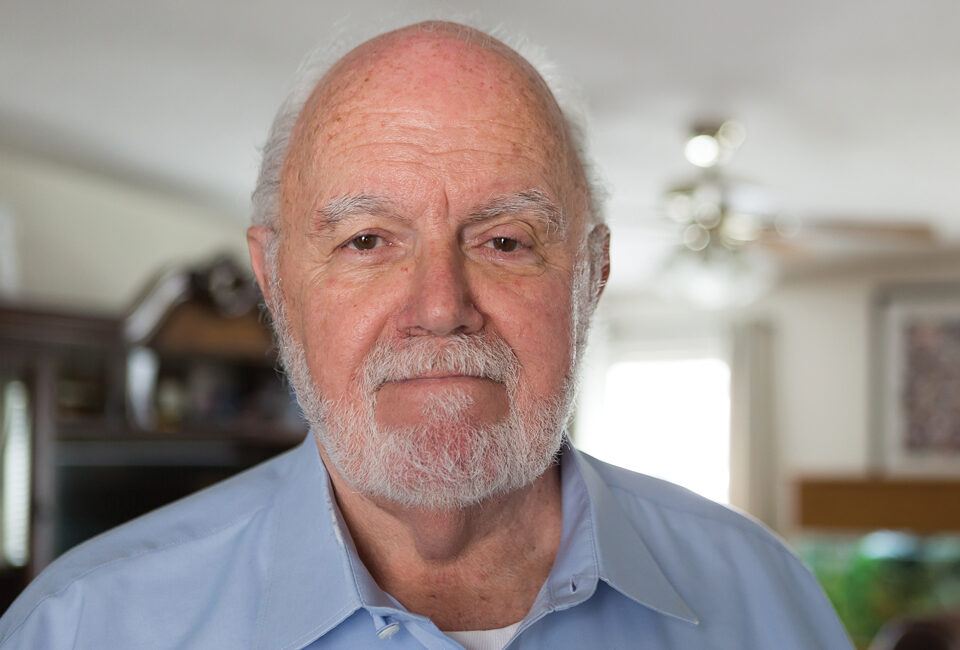

JORDAN PYSZ / iFoundMyDoctor.com
Mary was diagnosed with ocular pseudoexfoliation syndrome, a condition that can complicate cataract surgeries. Mary’s cataracts were removed with a laser and replaced with monovision IOLs that ended her dependency on glasses.
Mary Banaszak was 31 years old when she earned her bachelor’s degree in business from Dominican University in suburban Chicago. She soon began working in a business office but almost immediately felt drawn to a different career.
“The field of special education was just emerging, and I thought, That would be interesting,” Mary recounts. “But I learned I wouldn’t be able to teach with the degree I had. When my husband got a job with the University of the Pacific in California, I took courses there and earned a master’s degree in special education.
“I began teaching students with mild reading disabilities. I taught in multiple settings, from elementary to high school. I also did some one-on-one teaching with children who had major challenges.
“The last eight years of my career, I served as an educational diagnostician. That involved testing students and writing the academic reports that the school used when preparing the students’ evaluations. It was a very interesting job.”
Mary began teaching at age 36. She taught for 32 years and retired in 2013, when she moved to Sun City Center. Mary, who turns 79 in April, looks back at her career with great satisfaction.
“Each of the children I worked with had some issue that kept them from learning,” she explains. “It was very interesting and challenging to teach children with special needs, more challenging than teaching children who catch on quickly. And I loved it.”
Three years ago, Mary faced another challenge – with her vision. The cataracts that she and her eye doctor were monitoring had started to interfere with her daily activities.
The lenses are primarily composed of proteins. Cataracts are a clouding of the lenses due to a breakdown of those proteins. The only treatment is surgical removal of the lenses. Symptoms include blurred vision, light sensitivity and a reduction in the vibrancy of colors.
“My biggest problem was driving at night,” Mary shares. “There were halos around oncoming headlights, which were a big distraction and very irritating. My eye doctor told me I needed a cataract operation, but I decided to get a second opinion.
“I told my dentist that I wanted an eye doctor who is as efficient as he is, and he is the one who recommended Dr. Fisher at Brandon Eye Associates.”
Surgery Specifications
George Fisher, MD, is a board-certified, comprehensive ophthalmologist specializing in cataract surgery.
Dr. Fisher notes that cataracts are a normal part of the aging process.
“When we’re young, our lenses are clear, which allows light to freely pass through the eyes, enabling us to focus on objects near and far,” he elaborates. “As we grow into our 50s, 60s and 70s, just like we get gray hair, we also develop a clouding of those lenses, which can interfere with vision and make performing daily tasks more difficult.”
-Dr. Fisher
Cataract surgery is among the most common medical procedures, with more than 4 million performed each year in the US. Scheduled on an outpatient basis, cataract removal is typically performed on one eye at a time, a week or two apart.
Each procedure takes only a few minutes and starts with the breakup and removal of the clouded lens. That lens is then replaced with a synthetic intraocular lens, or IOL.
There are different types of IOLs. Doctors determine the best one for each patient based on the shape of the patient’s eye and the patient’s visual needs.
“A cataract is like a peanut M&M; the capsule is the candy shell outside, with two layers on the inside, the chocolate and peanut.
“During cataract surgery, we make a small opening into that candy shell. We then use a special device to break up and remove the peanut and chocolate layers of the cataract, leaving behind the candy shell— the capsule. We implant the IOL into the clear capsule.”
Dr. Fisher initially met Mary in April 2021. He recalls that at that time she was experiencing mild cataract symptoms, mainly a slight sensitivity to light and glare.
A year after she first met Dr. Fisher, Mary says her symptoms intensified to where she could not live life to the fullest, so she consented to cataract surgery.
However, when Dr. Fisher examined Mary’s eyes, he discovered a condition called ocular pseudoexfoliation syndrome (PXF, PEX). This chronic, age-related disorder causes a buildup of protein material in the supporting ligaments around the eyes (zonules). The condition can lead to complications that can make cataract surgery more challenging, the doctor asserts.
“In determining the best way to perform surgery in the wake of this finding, we decided to do laser-assisted cataract surgery using a femtosecond laser,” Dr. Fisher reports.
Femtosecond lasers cut tissue by emitting energy pulses at an extremely fast rate, one-quadrillionth (femto) of a second.
“With this approach, the opening into the cataract is made by the laser. It also softens the cataract before we remove it,” Dr. Fisher explains. “The result is less tension when removing the cataract, so there’s less tension on the weakened zonules.”
Typically, cataract surgeons select IOLs to correct the patient’s vision for distance, meaning reading glasses will likely be required for close-up vision. Another option, monovision, corrects one eye for distance and the other for reading.
This was the approach used in Mary’s case.
“We corrected Ms. Banaszak’s first eye for distance,” Dr. Fisher discloses. “There was a delay between her first and second surgeries, which gave her a few months to get used to her eyes being unequal. She tolerated it well, so we corrected her other eye for computer distance. As a result, Ms. Banaszak, who had worn glasses since she was 19, is glasses-free.”
“I Can See”
Mary is thrilled with the outcome and the doctor who performed the surgeries.
“I’m really glad Dr. Fisher suggested monovision because now I can see to read and drive without glasses,” she enthuses. “With Medicare, I’m entitled to one pair of glasses. I only need to use those to read very fine print, like on prescription bottles. Otherwise, my vision is clear. I can read the newspaper and computer with no difficulty. I can also drive at night without having to put up with those distracting halos.
“The reason I wanted to find a doctor I felt really good about is because I’ve heard some people complain about their vision after cataract surgery. Dr. Fisher makes me feel very comfortable. I have a lot of confidence in him. He’s quite knowledgeable and has a good rapport with his patients.”
Mary’s confidence was bolstered further when Dr. Fisher discovered another issue with one of her eyes.
“Dr. Fisher is so efficient that he found a freckle on my eye, which had never been diagnosed by any other doctor,” she reveals. “The freckle is a colored growth that can develop into cancer, so the doctors at Brandon Eye Institute are keeping a close watch on it.”






Leave a Reply